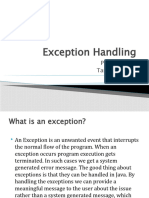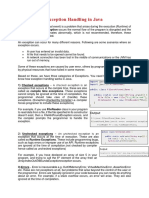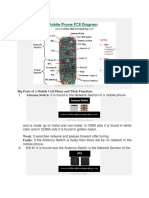0% found this document useful (0 votes)
20 views15 pagesChap4 Exceptionhandling
Chapter 4 covers exception handling in Java, explaining its purpose in maintaining application flow during runtime errors. It details the exception class hierarchy, types of exceptions (checked, unchecked, and errors), and the keywords used for handling exceptions (try, catch, finally, throw, and throws). The chapter emphasizes the importance of properly managing exceptions to ensure smooth program execution.
Uploaded by
Mukesh PeriasamyCopyright
© © All Rights Reserved
We take content rights seriously. If you suspect this is your content, claim it here.
Available Formats
Download as PPTX, PDF, TXT or read online on Scribd
0% found this document useful (0 votes)
20 views15 pagesChap4 Exceptionhandling
Chapter 4 covers exception handling in Java, explaining its purpose in maintaining application flow during runtime errors. It details the exception class hierarchy, types of exceptions (checked, unchecked, and errors), and the keywords used for handling exceptions (try, catch, finally, throw, and throws). The chapter emphasizes the importance of properly managing exceptions to ensure smooth program execution.
Uploaded by
Mukesh PeriasamyCopyright
© © All Rights Reserved
We take content rights seriously. If you suspect this is your content, claim it here.
Available Formats
Download as PPTX, PDF, TXT or read online on Scribd
/ 15

































































































